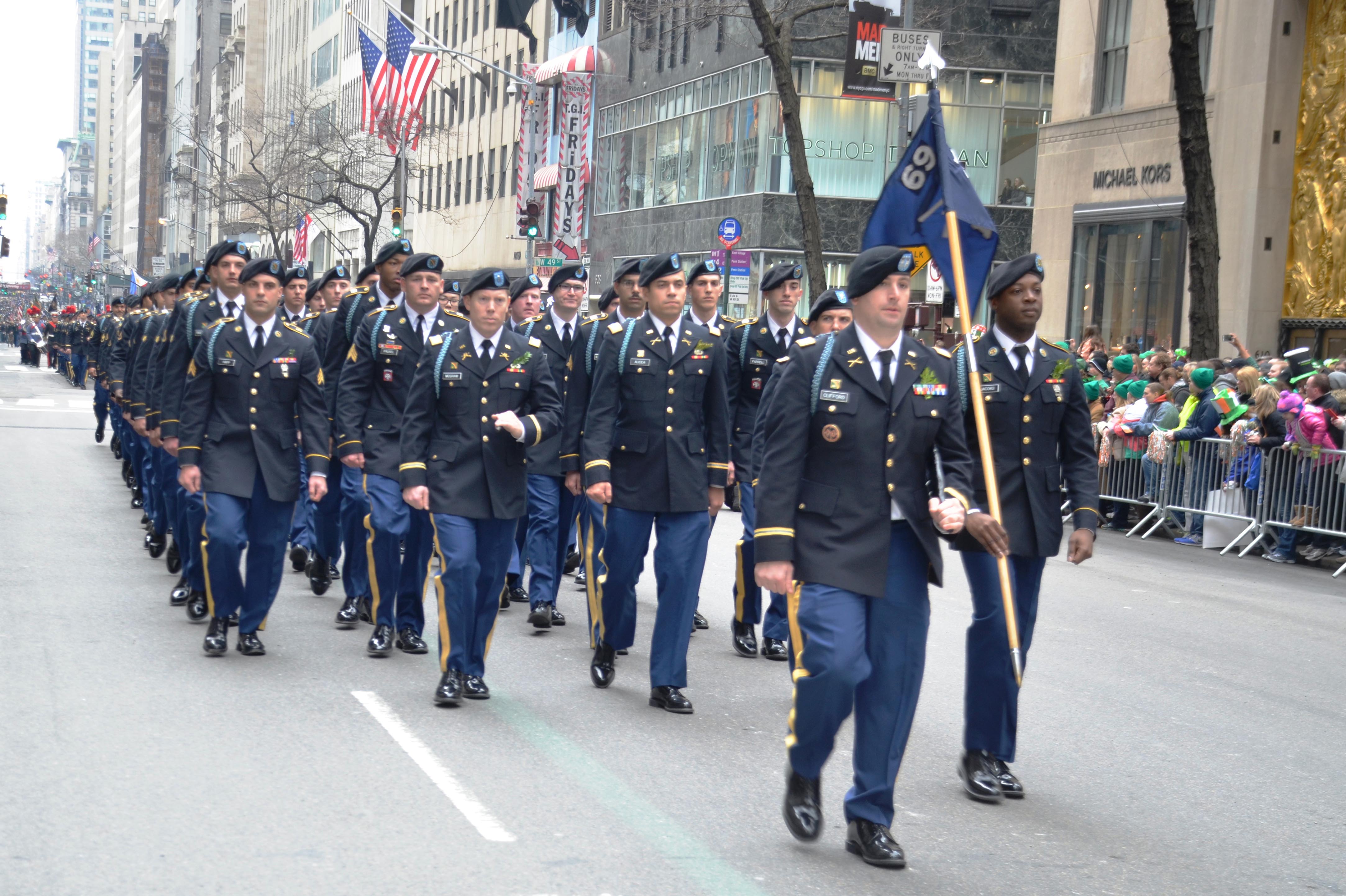
The New York National Guard's 1st Battalion 69th Infantry-"The Fighting 69th"-will lead the world's largest St. Patrick's Day Parade for the 165th time on Thursday, March 17.
The 69th Infantry, which was originally organized as a militia unit for Irish immigrants to New York, has led the New York City St. Patrick's Day Parade every year since 1851. The unit's Soldiers distinguished themselves in the Civil War, World War I, World War II, and during deployments to Iraq and Afghanistan.
The 42nd Infantry Division Band will also participate in the parade along with Major General Anthony German, the Assistant Adjutant General of New York, and other New York National Guard leaders.
"Leading New York City's St. Patrick's Day Parade is a tremendous honor for the Soldiers of the 69th Infantry and all members of the New York National Guard who participate in this wonderful tradition," said Major General Patrick Murphy, the Adjutant General of New York. "It is a chance to show the people of New York their pride in their service and embrace their roots as an Irish-American regiment."
During World Wars I and II, which the 69th served in Europe and the Pacific respectively, and again during Operation Iraqi Freedom, members of the unit's Veterans Corps marched in the parade in place of the serving National Guard Soldiers.
A host of traditions surround the 69th and the St. Patrick's Day Parade.
The members of the 69th place a sprig of boxwood on their uniform as a reminder of the regiment's charge against the Confederate Army's positions on Mayre's Heights during the Battle of Fredericksburg, on Dec. 13, 1862.
To mark their Irish Heritage, the men of the Irish Brigade, including the 69th Regiment, put sprigs of green boxwood in their hatbands that day. The Union attack failed, but the burial details found that the Union troops who made it closest to the enemy fortifications before being killed had sprigs of boxwood in their hats.
It was the fearlessness of the Soldiers at Fredericksburg that reportedly led to their nickname, coined by Confederate Gen. Robert E. Lee: "the Fighting 69th."
During the parade, officers of the 69th carry a fighting stick made of blackthorn wood imported from Ireland. The sticks, much like a British officer's swagger stick, are considered the mark of an Irish leader and gentleman.
The Soldiers are accompanied on their march by two Irish Wolfhounds, the official mascot of the 69th Infantry. For the last 26 years, the dogs have been provided by Irish wolfhound breeder Eileen Flanagan.
The religious icon was once worn by poet Joyce Kilmer -- the author of the poem "Trees" -- who died while serving in the 69th in World War I. Today it is handed down from battalion commander to battalion commander and carried in the parade.
At 6:30 a.m., the regiment's honorary bagpiper Joe Brady will lead the Soldiers out of the Lexington Avenue Armory and over to 51st Street for a special Mass at St. Patrick's Cathedral.
The Soldiers occupy the southern half of the church as the place of honor. The battalion commander traditionally joins the Adjutant General of New York, the Governor of New York and Mayor of New York City in a front pew for the service and the blessing for the regiment's Soldiers.
Following mass, the battalion marches to 44th Street and 5th Avenue, the official start of the parade.
When the 11 a.m. start time for the parade arrives, a member of the Parade Committee approaches the commander of the battalion and asks him the traditional question: "Is the 69th ready?"
At that point The Soldiers will roar back "The 69th is always ready!" and step off on the parade route north up Fifth Avenue.
At the end of the parade route, the Soldiers take a special subway train south to the station at 28th Street and march back to their armory.
Once at the armory, the unit's officers line the front steps to honor their men as they pass by. The parade is then followed by lunch and an awards ceremony.
On St. Patrick's Day in 2015, the then Chairman of the Joint Chiefs of Staff, General Martin Dempsey, took part in the 69th unit day events and led the Soldiers in singing the traditional Irish folk song "The Fighting 69th."
The song-which has been recorded by the traditional Irish folk group the Wolfe Tones, as well as the Celtic punk rock band the Dropkick Murphys--the story of the 69th Infantry during the Civil War.